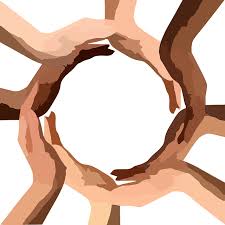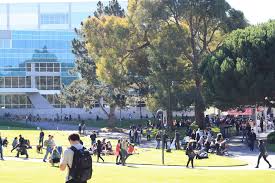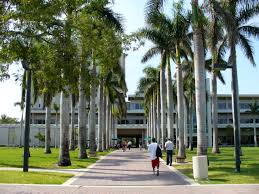
Going to a diverse college offers many advantages. At diverse colleges, you’ll be exposed to a wide variety of people and be given an opportunity to learn from people who are different from you. If you know you want to go to a diverse college, how do you find diverse colleges? Which are the most diverse colleges in the United States?
In this article, I will provide you with a list of the most diverse colleges. Furthermore, I'll explain what makes a college diverse, the benefits of going to a diverse college, and how to determine if a specific college is diverse.
What Makes a College Diverse?
Literally, diverse means showing a great deal of variety. Usually, when people reference diversity at a college, they're referring to the racial and ethnic diversity of the student body. A diverse college will have a significant percentage of students from multiple racial and ethnic groups.
However, racial diversity is not the only variable that determines whether or not a college is diverse. Here are other factors that contribute to the diversity of a college:
- Geographic diversity - Diverse colleges have a higher percentage of out-of-state and international students.
- Male-female diversity - Schools with more gender balance are more diverse.
- Faculty diversity - Diverse colleges have more racial and ethnic diversity in their faculties, and their faculties have more gender balance.
- Economic diversity - A diverse college will have a significant percentage of students from all income levels.
There are some other factors that contribute to diversity, but there are fewer available statistics to definitively determine diversity in these areas. The political diversity of a college refers to the percentage of students from different political persuasions. A politically diverse college will have a significant number of conservative, liberal, socialist, and libertarian students.
A religiously diverse college will have a large percentage of students from different religious backgrounds; it could have a substantial representation of Catholic, Protestant, Mormon, Jewish, Muslim, and Hindu students.
Finally, the percentage of LGBT students contributes to the diversity of a college. A diverse college will have a visible LGBT community and students that openly express different sexual orientations and gender identities.

What Are the Benefits of a Diverse College?
There are numerous benefits of attending a diverse college. In college, you learn from your peers and fellow students. If you're exposed to more people from different backgrounds, you're likely to gain a better understanding of different types of people and their views. As our economy becomes more globalized, being knowledgeable about various cultures can benefit you in your professional life.
Also, if you're a member of an underrepresented group, going to a diverse college can make you feel more comfortable, especially if there's a significant number of students at the college who share your background or beliefs. Similarly, if you come from a diverse high school or neighborhood, you may feel more at home at a diverse college.
Furthermore, colleges with diverse faculties may offer a more well-balanced education. Course offerings and instruction at a college can be reflective of the backgrounds and views of the faculty, especially in the humanities and social sciences. Additionally, colleges with diverse faculties show a commitment to diversity and are likely to embrace diversity in their student bodies as well.
The List of the Most Diverse Colleges
I've given you a list of the top 50 most diverse colleges in the country. Hopefully, you can find at least a few that interest you if you want to attend a diverse college.
Niche
Niche is a website that provides reviews, rankings, and statistics about neighborhoods and schools. It provides many different college ranking lists from the overall best colleges to the top party schools to the most diverse colleges.
The Niche rankings for the most diverse colleges are based on clear criteria that give a fairly accurate measurement of a college's level of diversity. Here's how Niche measures diversity:
- 20% of the rankings is based on the percentage of international students
- 20% is based on the percentage of the most represented ethnicity (a lower percentage=more diverse)
- 20% is based on students' survey responses about the quality of diversity at their colleges
- 15% is based on the percentage of out-of-state students
- 10% is based on the percentage of the faculty's most represented ethnicity
- 5% is based on the ratio of male to female faculty
- 5% is based on the percentage of students belonging to the most represented income bracket (a lower percentage=more diverse)
- 5% is based on the ratio of male to female undergraduates
The List
Many selective private colleges are in the top 50 most diverse colleges, including Pomona, Amherst, MIT, Stanford, Swarthmore, Yale, and Harvard. Interestingly, the entire top 25 is composed of private colleges.
Possibly, the reason for this is because private colleges emphasize diversity more in their recruiting and admissions processes. Also, many public colleges have a much higher percentage of in-state students due to lower tuition costs for in-state students and targeted efforts to enroll more in-state residents.
Some public universities in the top 50 include California State University-East Bay, Rutgers University-Newark, University of Hawaii at Hilo, and San Francisco State University. These diverse public colleges are located in diverse areas.

San Francisco State University
| School | Location | Acceptance Rate |
| 1. Pomona College | Claremont, CA | 14% |
| 2. Amherst College | Amherst Town, MA | 14% |
| 3. Massachusetts Institute of Technology | Cambridge, MA | 8% |
| 4. Soka University of America | Aliso Viejo, CA | 43% |
| 5. Hawaii Pacific University | Honolulu Township, HI | 64% |
| 6. Stanford University | Stanford, CA | 6% |
| 7. Brown University | Providence, RI | 9% |
| 8. California College of the Arts | San Francisco, CA | 82% |
| 9. Yale University | New Haven, CT | 7% |
| 10. Swarthmore College | Swarthmore, PA | 14% |
| 11. Grinnell College | Grinnell, IA | 35% |
| 12. Barry University | Miami, FL | 47% |
| 13. Columbia University | New York City, NY | 7% |
| 14. Chaminade University of Honolulu | Honolulu Township, HI | 84% |
| 15. University of Miami | Coral Gables, FL | 40% |
| 16. Wellesley College | Wellesley, MA | 29% |
| 17. Rhode Island School of Design | Providence, RI | 27% |
| 18. New York University | New York City, NY | 32% |
| 19. University of San Francisco | San Francisco, CA | 69% |
| 20. California Institute of the Arts | Santa Clarita, CA | 31% |
| 21. Rice University | Houston, TX | 17% |
| 22. Emory University | Atlanta, GA | 26% |
| 23. Nyack College | Nyack, NY | 97% |
| 24. University of Chicago | Chicago, IL | 9% |
| 25. Holy Names University | Oakland, CA | 57% |
| 26. California State University-East Bay | Hayward, CA | 68% |
| 27. Rutgers University-Newark | Newark, NJ | 54% |
| 28. University of Hawaii at Hilo | Hilo, HI | 75% |
| 29. The New School | New York City, NY | 67% |
| 30. University of Bridgeport | Bridgeport, CT | 64% |
| 31. Carnegie Mellon University | Pittsburgh, PA | 25% |
| 32. Washington Adventist University | Tacoma Park, MD | 45% |
| 33. Agnes Scott College | Decatur, GA | 67% |
| 34. University of Hawaii at Manoa | Honolulu Township, HI | 80% |
| 35. Harvard University | Cambridge, MA | 6% |
| 36. Wesleyan University | Middletown, CT | 20% |
| 37. Princeton University | Princeton, NJ | 7% |
| 38. University of Houston | Houston, TX | 58% |
| 39. University of Pennsylvania | Philadelphia, PA | 12% |
| 40. Manhattanville College | Harrison, NY | 77% |
| 41. Santa Fe University of Art and Design | Santa Fe, NM | 100% |
| 42. San Francisco State University | San Francisco, CA | 60% |
| 43. Pace University | New York City, NY | 81% |
| 44. Texas Wesleyan University | Fort Worth, TX | 46% |
| 45. Nova Southeastern University | Fort Lauderdale, FL | 57% |
| 46. Earlham College | Richmond, IN | 64% |
| 47. University of Southern California | Los Angeles, CA | 20% |
| 48. St. John's University-New York | Queens, NY | 53% |
| 49. Berklee College of Music | Boston, MA | 19% |
| 50. Clark University | Worcester, MA | 70% |

Massachusetts Institute of Technology
Student Reviews
Niche also offers student reviews of colleges. Here are some comments written by students of some of the most diverse colleges in the United States. I included comments related to the diversity at the college.
Pomona College
It gets more and more diverse every year in terms of students of color, international students, and low-income students! And the communities aren't completely separated like they tend to be at other schools- each person is a valued part of this community.
Love the student body! It's diverse, inclusive, and just a melting pot of all sorts of identities and personalities, all of which come to create a wonderfully complex community on campus. You'll see a lot of variety- no typical culture here. People might think that Pomona is more laid-back than its peer liberal arts colleges due to its California location, but I don't think it is. It's a little bit more humble/mainstream than preppy New England schools, but students take their academics and their futures very, very seriously.
Amherst College
I feel as if there is a gap between the different races and ethnicities on campus. They seem to congeal together and don't venture out of their created friend groups based on their homeland.
I come from a largely homogenous high school, so coming to Amherst was my first chance to ever meet so many people from different ethnicities and backgrounds. It is NOT just white and preppy. Well, it's pretty preppy. But definitely not predominantly white.
Stanford University
One of the most diverse schools as far as every aspect goes except for international students. But the school is not just ethnically diverse, but very socioeconomically diverse, thanks to the financial aid.
The campus is extremely diverse in all aspects. This is fueled by the large number of international students at the school. However outside of Greek organizations the different groups tend to stick together within their own social circles and very few branch out.
University of Miami
My school is amazing when it comes to diversifying your life. Here you can meet people of different races, religions, backgrounds; you name it, we've got it.
I don't regret coming to Miami at all- I love it here! I was a little hesitant coming to a school with so many wealthy people, while I am not at all. But it really hasn't been an issue at all! The student body is so diverse, I can always find people to talk to.

University of Miami
How Should You Use The List of the Most Diverse Colleges?
If you want to go to a very diverse college, you should research the colleges that interest you on the Niche list to determine if they’re schools you should apply to or attend.
There are many factors to consider to determine if a college is a good fit for you including location, selectivity, support services, and the majors offered. Look at the school’s website, and use guidebooks, college finders, search websites, and other ranking lists to help you in the college selection process. If possible, consult with teachers, counselors, parents, current students, and alumni.
What Should You Do if You Want to Go to a Diverse College, But a School You're Considering Isn't on the List?
Just because a school didn't make the list doesn't necessarily mean that it's not diverse. Many big public state universities didn't rank highly for diversity, but big public state schools often have large numbers of students from all different backgrounds, especially if the school is located in a diverse state.
Look at the school's website to see if there are student groups that represent a wide variety of interests or yours in particular.
Also, you can consult other sources that evaluate or grade the diversity of a college. If you look up a specific college on Niche, you can find its diversity grade as well as a write-up and student reviews about diversity on campus. If you look up a college on College View, you can find the statistics for the student body racial diversity, total numbers of male and female faculty, and the states and countries represented by its students.
What's Next?
If you want to check out more ranking lists that show a school's commitment to diversity, you can read about the most LGBTQ-friendly schools. Also, if you're looking to go to an elite school with very accomplished students, investigate the most selective colleges.
Finally, as you're navigating the college application and selection process, I highly recommend that you read this post about how to do college research.
Want to improve your SAT score by 160 points or your ACT score by 4 points? We've written a guide for each test about the top 5 strategies you must be using to have a shot at improving your score. Download it for free now:
Have friends who also need help with test prep? Share this article!

Justin has extensive experience teaching SAT prep and guiding high school students through the college admissions and selection process. He is firmly committed to improving equity in education and helping students to reach their educational goals. Justin received an athletic scholarship for gymnastics at Stanford University and graduated with a BA in American Studies.



































 Holly R.
Holly R.